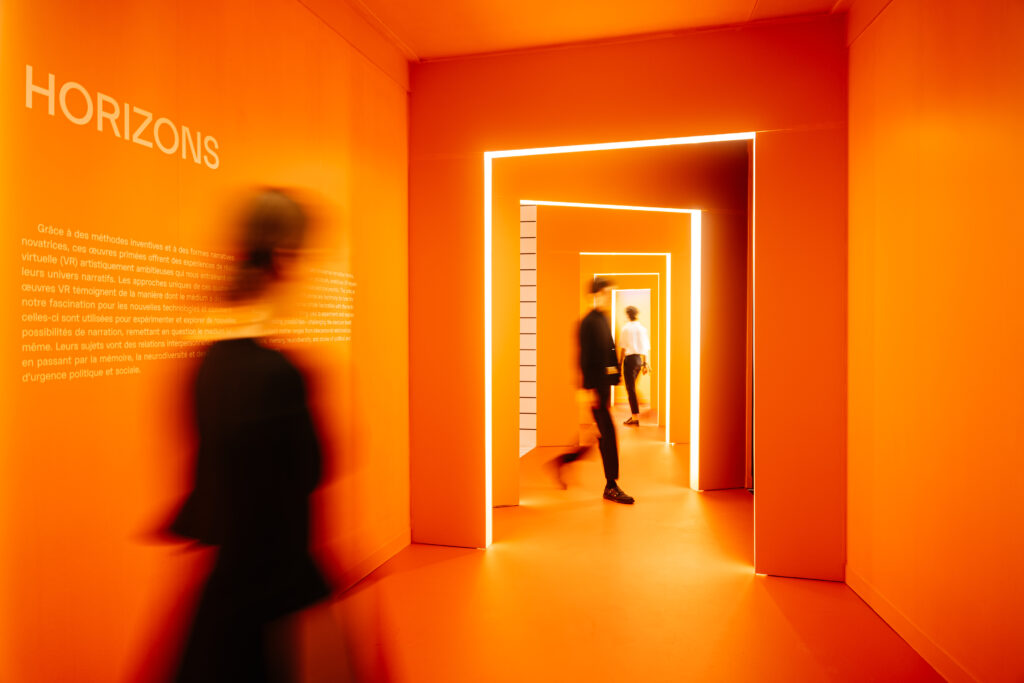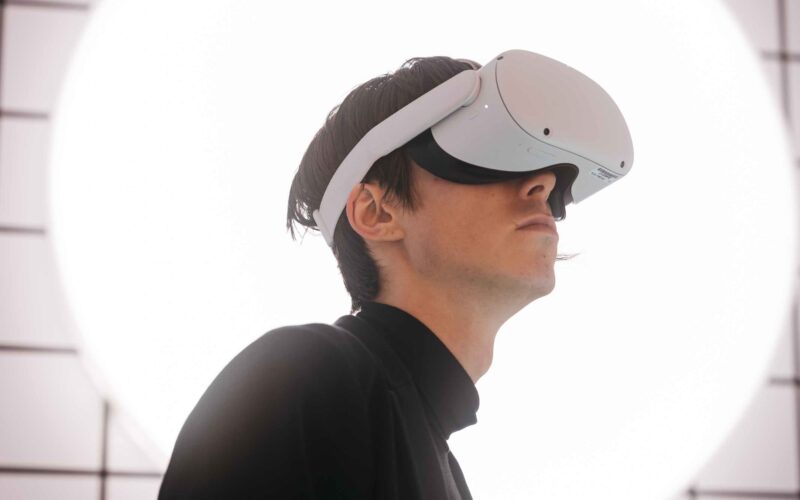The multipurpose venue displays award-winning virtual reality works
The PHI Centre reopened its Horizons VR exhibition on Nov. 9. The installation consists of four different rooms, each designated for a virtual reality exhibit, some including user-interactive elements. These award-winning pieces were all breathtaking in their own unique ways. Each one had me pulling off my headset either in complete awe or in intense reflection on the content I had just experienced.
Goliath: Playing with Reality is about a man who is diagnosed with schizophrenia after losing his parents, after which he spends several years in isolation taking strong medication. The protagonist, who goes by Goliath, finds solace in connecting with the outside world through video games after his return home.
This piece is a true sensory overload. Bombardments of colours, shapes, and creatures create an intense feeling of hallucination and detachment from reality, all while keeping a video game theme as the virtual world demonstrates pixelated elements over many occasions. A few interactive moments involving first-person shooting and old arcade games allowed an extra level of immersion, and Tilda Swinton’s partial-narration was a soothing contrast to the chaos displayed throughout.

A following room is designated for the viewing of Reeducated, the animated true story of three strangers who were placed in a Xinjiang “reeducation” camp. The three men were caught in the middle of quite possibly the “largest internment of ethnic and religious minorities since the second world war,” according to The New Yorker.
Displayed as a 360° VR short film, the memoir strikes emotion visually and through storytelling. The animation, created with a nod to Chinese ink wash painting, exposes the bleak horrors that average citizens must endure if they come from circumstances that aren’t to the government’s liking. As for the narrators, their friendship formed through hardship is poignant and tear-jerking, and it can be felt through the story they recount.
The third VR work, Kusunda, brings the viewer to rural Nepal, where they are placed in an interview conducted as a POW with shaman Lil Bahadur, who has forgotten his dying native dialect of Kusunda. Meanwhile, his granddaughter Hima takes initiative to revive the language of her family and ancestors.
The heartwarming film tells their story through colourful CGI animation as well as live-action, splitting between informative and artful entertainment. The learning experience is topped off interactively, as the viewer is asked to pronounce words of the Kusunda language in order to resume the experience, which in turn spreads the subtle revival of the dialect.
Finally, Marco & Polo Go Round tells the story of a couple facing problems in their relationship, which takes a severe anti-gravitational twist. As we follow the couple around their messy apartment, many objects around the kitchen fly up in the air, sticking to the ceiling. This is a reflection of the gradual dissolution of the protagonists’ love.
Marco & Polo Go Round is about half the length of all of the other pieces, so it only has enough time to strike hard with its surrealism. The message, while not up-front, is especially thought provoking given the minimal context provided. It’s a beautiful animated metaphor.
It’s clear why the PHI Centre selected these four works to display. Each one deserved to win their multiple respected awards. Virtual reality, if done correctly, can definitely be an art form.




